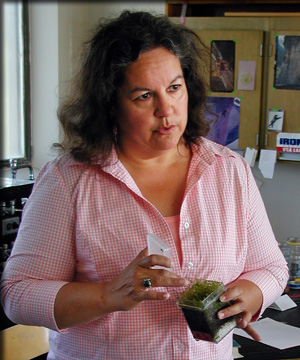Anyone who’s been around me more than a few minutes knows that I love language — its sounds, its clarity and lack of clarity, and its anthropology. A friend of mine sent me an article about learning Potawatomi, the language of an indigenous American people who are now scattered to the winds in “a tribal diaspora” — as the author puts it — and the language of her ancestors.
I loved Robin Wall Kimmerer’s understanding about the Potawatomi people’s language and their relationship to the earth — their language gives life to inanimate objects. In this excerpt, she talks about how a noun moves to a verb, giving it animacy. The language lovers among you will totally “get” Kimmerer’s thrill when she sees the relationship between language and the natural world.
An electric current sizzled down my arm and through my finger, and practically scorched the page where that one word lay. In that moment I could smell the water of the bay, watch it rock against the shore and hear it sift onto the sand. A bay is a noun only if water is dead. When bay is a noun, it is defined by humans, trapped between its shores and contained by the word. But the verb wiikegama–to be a bay–releases the water from bondage and lets it live. “To be a bay” holds the wonder that, for this moment, the living water has decided to shelter itself between these shores, conversing with cedar roots and a flock of baby mergansers. Because it could do otherwise–become a stream or an ocean or a waterfall, and there are verbs for that, too. To be a hill, to be a sandy beach, to be a Saturday, all are possible verbs in a world where everything is alive. Water, land, and even a day, the language a mirror for seeing the animacy of the world, the life that pulses through all things, through pines and nuthatches and mushrooms. This is the language I hear in the woods, this is the language that lets us speak of what wells up all around us.
Click here to read the entire essay on The Daily Good.
Robin Wall Kimmerer is a member of the Citizen Potawatomi Nation, a botany professor at SUNY Syracuse in New York, and has published several books and essays. Here’s an interview with her in a podcast. Fascinating!

